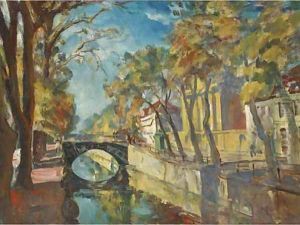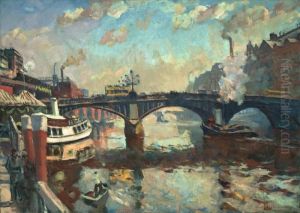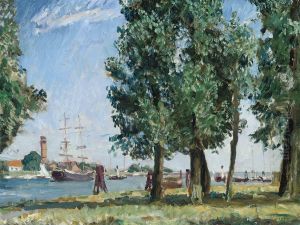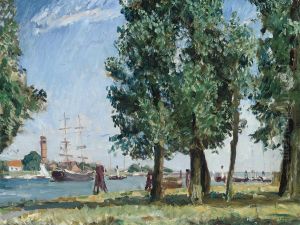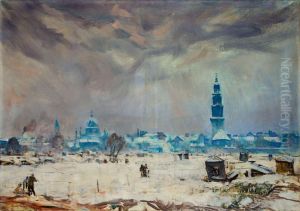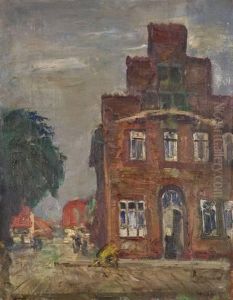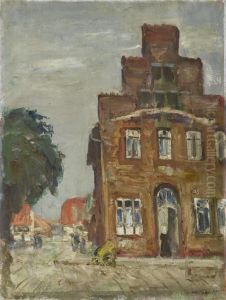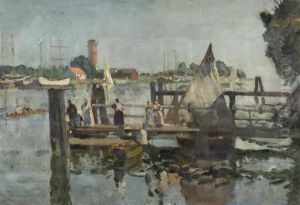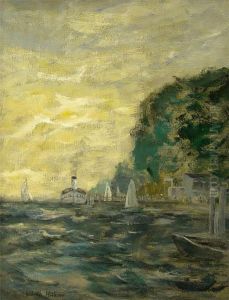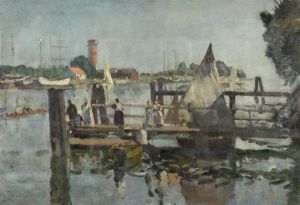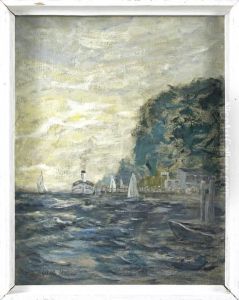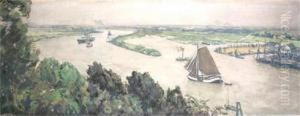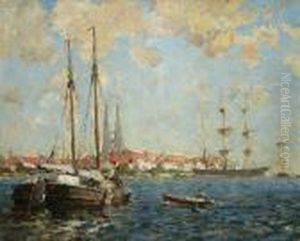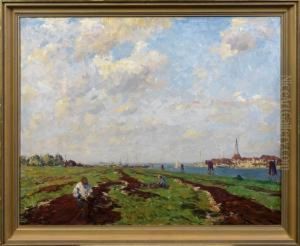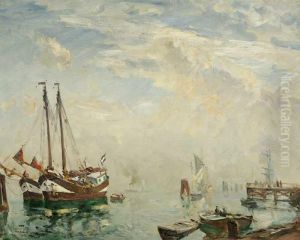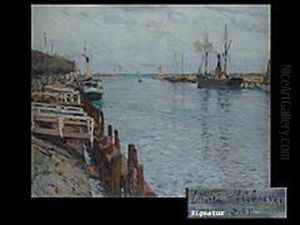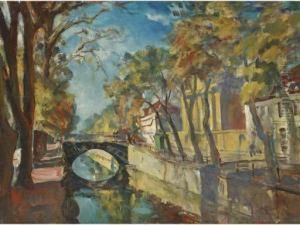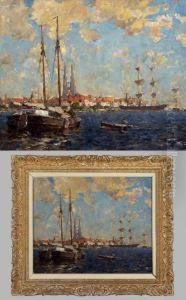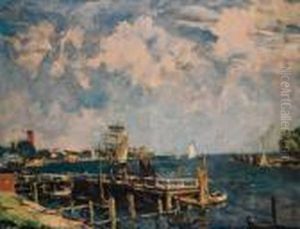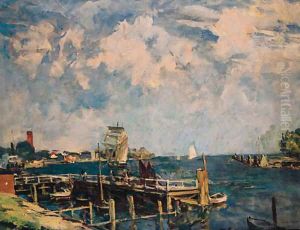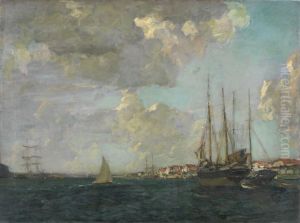Ulrich Hubner Paintings
Ulrich Hübner was a German painter known for his impressionistic approach to art, particularly within the genres of landscape and maritime painting. Born on January 17, 1872, in Neustrelitz, Germany, he developed an interest in art at a young age. Hübner studied at the Düsseldorf Academy of Arts, and later at the Weimar Saxon-Grand Ducal Art School, where he was influenced by the works of the French Impressionists.
During his early career, Hübner was associated with a group of artists known as the 'Berlin Secession', which sought to break away from the traditional academic standards of the time and was characterized by its openness to new styles and influences, including Impressionism and later, Expressionism. Hübner's own style was marked by a vibrant color palette and a loose, expressive brushwork, which captured the atmospheric qualities of his subjects.
Throughout his life, Ulrich Hübner traveled extensively, drawing inspiration from the different landscapes and seascapes he encountered. His maritime paintings, in particular, are noted for their dynamic representation of water and light, conveying the movement and mood of the sea.
Hübner's work was widely appreciated during his lifetime, and he exhibited at various important venues, including the Great Berlin Art Exhibition. Despite the popularity of his work, he remained committed to his artistic integrity and continued to evolve his style without conforming to the prevailing art trends.
Sadly, Ulrich Hübner's life was cut short when he passed away on April 25, 1932, in Berlin. Nevertheless, his body of work left an enduring legacy in the realm of German Impressionism, and his paintings are still celebrated for their luminous quality and impressionistic sensibility. Hübner's art continues to be showcased in museums and galleries, attesting to his contribution to the world of art and his lasting impact on future generations of artists.
